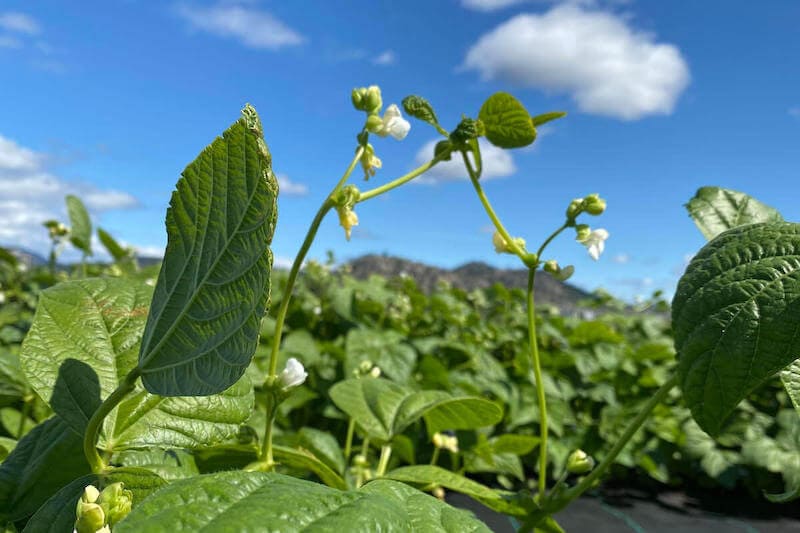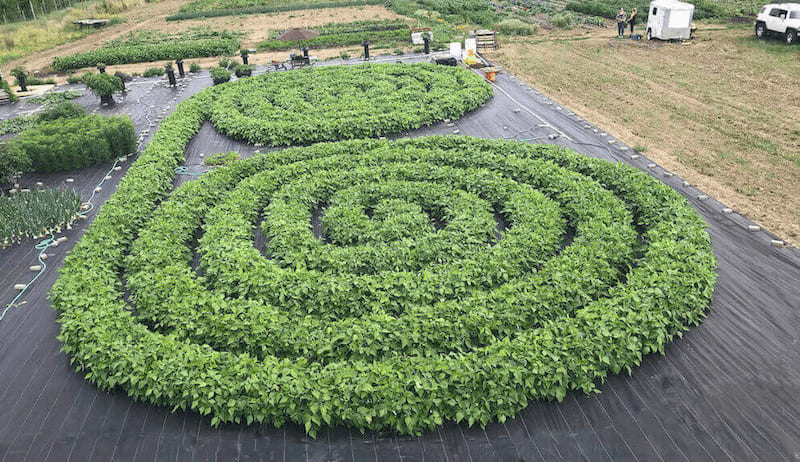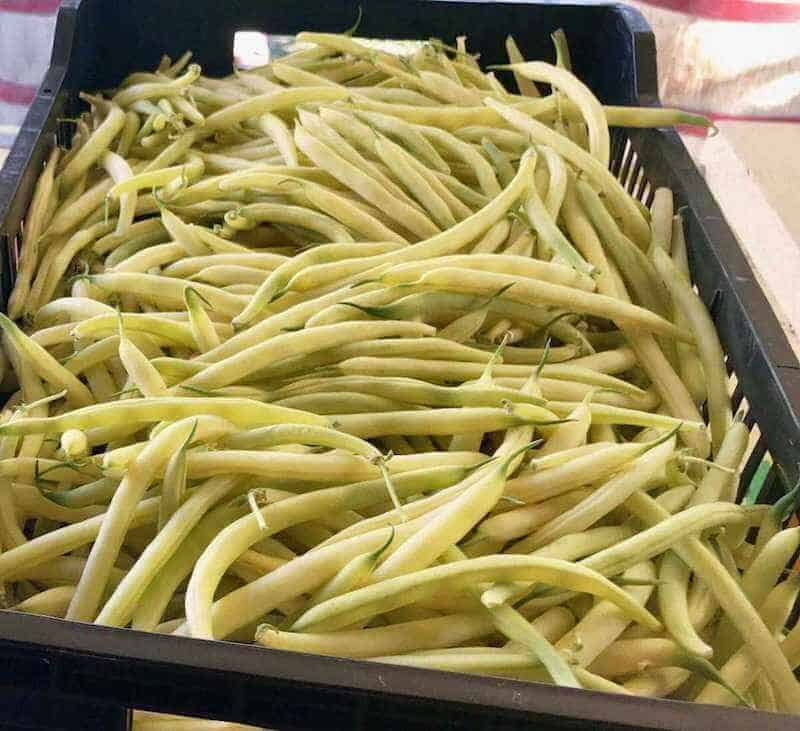
The United States leads the world in bean production growing various types of beans on over 2 million acres. Number one is soybean followed by the navy bean. Both are grown for the processing industry and half are shipped overseas.
All commercial bean production in the United States is mechanized with beans harvested by machine instead of by hand. Plant breeders are continually creating genetically modified beans specifically for machine harvesting. Mechanized agriculture is efficient, but harmful to the environment. Years of tilling and continuous applications of manmade fertilizer and fertilizer degrades the soil eventually creates a “dead zone” where nothing will grow, not even weeds.
Frequent outbreaks of Listeria and other pathogens caused by bacteria present in the field or at the processing plant are common. Mechanical harvesters take the whole plant; herbicide and insecticide residue, insects, insect eggs and any part of a plant (leaf, stem, and root) that may be infected and more than 20% of the bean harvest is lost to over ripe or under ripe bean pods when they are sorted at the processing plant.
Pivot irrigation, once hailed as the greatest innovation in agriculture since the invention of the gas-powered tractor, is singularly responsible for the destruction of half of all of the country’s aquifers. Huge reserves of subterranean lakes formed millions of years ago have been severely depleted and those that have been entirely drained have collapsed and have lost their ability to refill and store water.
Despite this, agribusiness is not giving them up, so aquifers will continue to drain and collapse seemingly until nothing is left. Before pivot irrigation, beans where irrigated by flooding trenches between raised rows. After pivot irrigation, is any one’s guess. It would seem time for another innovation in irrigation is needed to something more sustainable.

An innovative irrigation system developed by Crop Circle Farms ® conserves a tremendous amount of water without sacrificing production and in fact can double bean production for farms with small acreages.
Crop Circle Farms are scalable from one tenth of an acre to an acre, designed for farmers with small landholdings in isolated or urban settings specifically. Realizing that tractored agriculture was not going to be practical and that bean harvests had to be picked by hand, a Crop Circle Farm would have to be different compared to a field farm.
One of the first differences is design. Instead ofgrowing beans in parallel raised rows, beans are grown in geometric spirals. The spirals allow for full sun penetration among plants, which limits the effect of shadowing, a common occurrence between farm rows were bean plants in long periods of shadow slow growth and flower less. Spirals provide easy access to plant and harvest and prevent onset of waterborne disease by irrigating under the canopy.
Proprietary irrigators spaced alternately along the spiral deliver a proportionate amount of liquid nutrient to each plant. A permeable ground cover covers the soil to control weed growth and attract heat from the sun. A sectional conveyor extends into the center of the spiral creating a rollered gangway to slide bean boxes from the spiral to the harvest truck. The low profile and circular shape provide protection from the blowing wind.
Crop Circle Farms employs a drill don’t till system of agriculture for growing beans. Instead of tilling an entire field for growing beans, only the soil exposed by the ground cover openings is worked using a drill to excavate a cavity in the soil, which is filled with a fertilized growth medium. Drill don’t till agriculture saves 90% of the water and 95% of the fertilizer currently used by conventional tractor farming. At the end of the growing cycle, plants are pulled, cavities are refilled with fertilized medium and replanted with a different variety of plant thereby rotating different plants from one growing cycle to another, which mimics the grandfather method of rotating crops in the field popular 100 years ago.

Bush beans are the preferred variety of bean for Crop Circle Farm technology. Pole beans can be grown but may not be practical because of the trellising that is required. If pole beans are grown, a Fibonacci spiral should be used, which by design opens more space between loops as the spiral winds out from the center. Graduating space between loops allows for additional penetration by the sun to compensate for the height of the structured trellis.
After the Crop Circle Irrigator is fitted over the medium filled opening, between 15 and 20 bean seeds are broadcast over the medium and covered with an inch of enriched compost. The number of beans seeds ensures that a dozen or so will germinate. A white, semi-transparent germination cloth may be used to protect bean seeds from birds, cold and frost.
Green bush beans are generally more prolific than yellow, and purple, colored beans by a 2 to 1 margin however, colored beans fetch more at the market much like colored peppers do. Other types of beans may be grown in the plant formation such as edamame (soybeans), bush lima beans and kidney beans.
Amazingly, bush beans create a “so above – so below” synergistic plant structure that shields plants from pests and disease. The roots of one plant intertwine with another seemingly to create a single organism, the whole stronger that any one single plant.

A 1/27th of an acre Crop Circle Bean Farm covers a 40-foot by 40-foot area and grows 2,400 bean plants and 72,000 bean pods (1,000 pounds) on average and revenue between $4,000 and $8,000 depending on variety and market retail price of between $4 and $8 respectively.
A quarter acre Crop Circle Bean Farm covers a 100-foot by 100-foot area and grows 16,800 bean plants and 504,000 bean pods (4,000 pounds) and between $28,800 and $57,600 depending on variety and market retail price of between $4 and $8 respectively.
A half-acre Crop Circle Bean Farm covers a 150-foot by 150-foot area and grows 30,000 bean plants and 900,000 bean pods (7,200 pounds) and revenue between $48,000 and $96,000 depending on variety and market retail price of between $4 and $8 respectively.
An acre Crop Circle Bean Farm covers a 200-foot by 200-foot area and grows 60,000 bean plants producing 1,800,000 bean pods (25,000 pounds) and revenue between $100,000 and $200,000 depending on variety and market retail price of between $4 and $8 respectively.